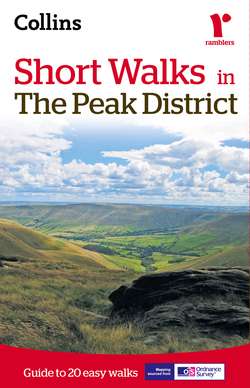Читать книгу Short walks in the Peak District - Collins Maps - Страница 8
Geology
ОглавлениеThe rocks which made the foundations of the Peak District were laid down millions of years ago in a warm sea. Miriads of sea creatures living on the slimy bottom built up the great depth of limestone. Tropical lagoons were fringed by coral reefs which, through time, have become the rounded hills of Thorpe Cloud, Parkhouse and Chrome Hills in Dovedale. Minor volcanic activity took place during this time. The best examples of this can be found in the small outcrops of basalt near Castleton and in the dolerite quarry which is part of the Tideswell Dale Nature Trail. Lead found its way in gaseous form, through minute cracks in the underlying rocks, laying down the basis of what became a major industry thousands of centuries later. Copper was also deposited in this way, occurring beneath Ecton Hill in the Manifold valley.
A mighty river delta flooded into the tropical sea, depositing mud and sand which consolidated to make the gritstones of the Dark Peak and the shales of Mam Tor.
Gradually, the layers of limestone and gritstone bulged from pressures deep within the earth and the middle and edges split. Ice action later honed the land into the beginning of the Peak District’s rocky pattern. At the end of the Ice Age, huge volumes of melt water continued this shaping. The water carved caverns within the limestone of Castleton and Matlock as well as the pot holes of Eldon and it also created the beautiful dales. The land tilted as it buckled to give west facing gritstone outcrops on both sides of the Peak.
